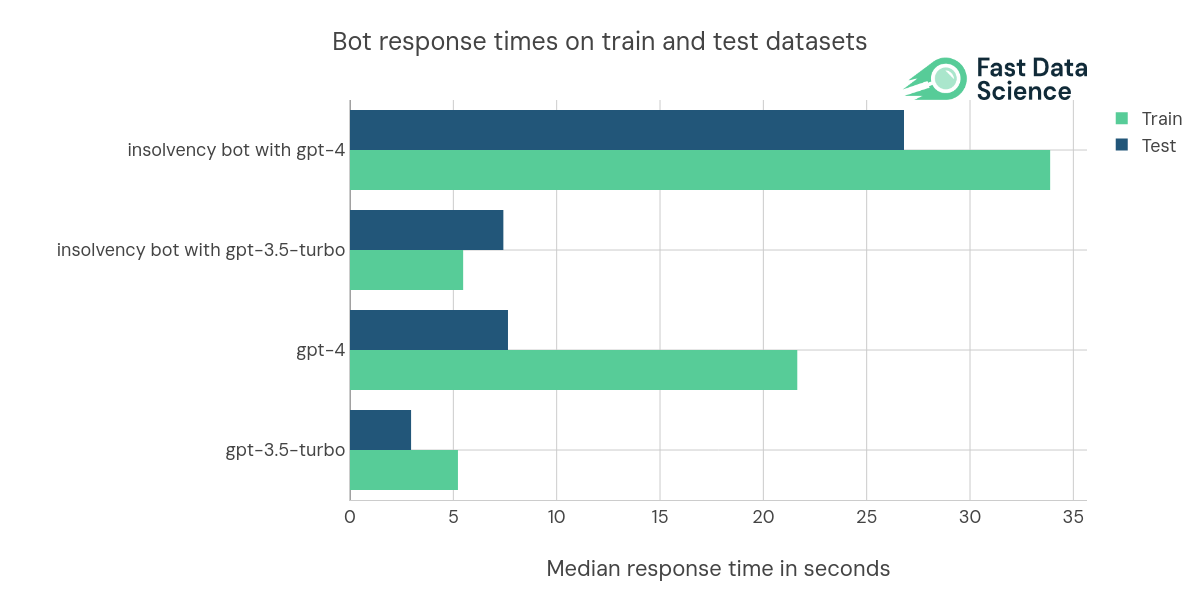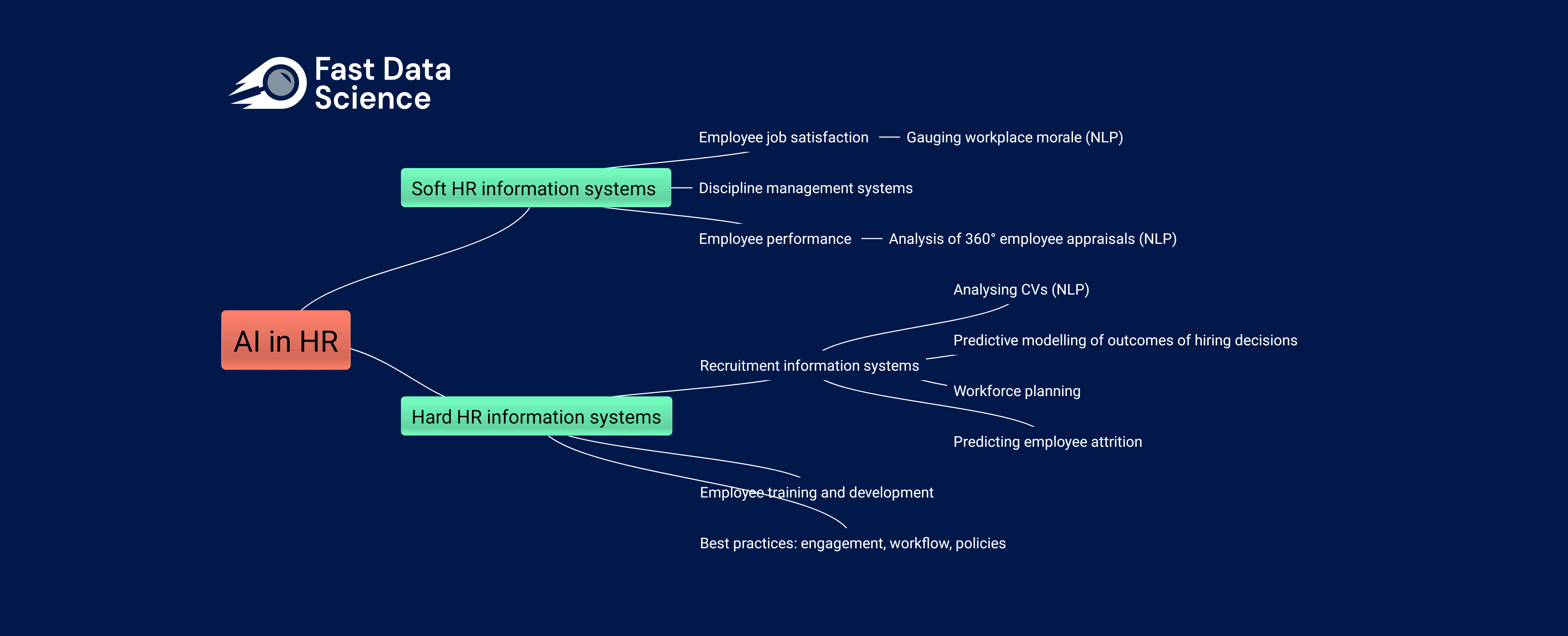
Suchen Sie Experten in Natürlicher Sprachverarbeitung? Veröffentlichen Sie Ihre Stellenangebote bei uns und finden Sie heute Ihren idealen Kandidaten!
Veröffentlichen Sie einen JobWir haben einen Bot entwickelt, der die Verarbeitung natürlicher Sprache nutzt, um die Leistungsfähigkeit von legalem NLP zu demonstrieren.
Fast Data Science hat mit einem Team von KI- und Rechtsexperten am Department of Law and Criminology der Royal Holloway University und am Department of Computer Science der University of Surrey zusammengearbeitet, um einen Chatbot zu entwickeln, der Fragen zu Unternehmensinsolvenzen in England und Wales beantworten kann.
Mithilfe von Prompt Engineering, generativen Modellen und dem Wortlaut wichtiger Gesetze des Vereinigten Königreichs wie dem Insolvency Act 1986 , wichtiger Rechtsprechung aus den National Archives und Informationen zu Verfahren auf der Website des HMRC selektiert das System eingehende Anfragen und sendet eine intelligente und informative Eingabeaufforderung zu einem generativen Modell.
Unter diesem Link können Sie den Insolvenz- Chatbot ausprobieren.

Die auf dieser Website bereitgestellten Informationen stellen keine Rechtsberatung dar und sind auch nicht als solche gedacht.
Wir haben einen innovativen Ansatz zur Bewertung der Ausgabe des Bots verwendet, da es sich um ein generatives Modell handelt, das normalerweise schwer zu bewerten ist. Wir verwenden ein vom Menschen definiertes Notenschema und verwenden das LLM, um die Antworten des Bots auf Testfragen zu bewerten und ihn so zu bewerten, als würde er eine juristische Prüfung ablegen.
Wir werden die Antwort des Insolvenz -Bots entgegennehmen und sie zusammen mit einer begleitenden „Kriteriumsfrage“ an GPT-4 weiterleiten, z. B. „Erwähnt der Anwalt, dass die Durchdringung des Unternehmensschleiers dadurch erfolgen kann, dass der Geschäftsführer seine Treuhandpflichten gegenüber dem Unternehmen verletzt?“ . Wenn die Antwort „Ja“, „Vielleicht“ oder „Ja“ mit Vorbehalten lautet, werden entsprechend Punkte vergeben.

Wir haben einige Validierungsskripte in unserem Github-Repo unter: https://github.com/fastdatascience/evaluate_insolvency
Wir haben eine Reihe von Varianten des Bots ausprobiert, darunter eine, die auf GPT-3.5 Turbo und GPT-4 basiert, und ihn im direkten Vergleich mit den unveränderten Versionen von GPT getestet.
Wir haben festgestellt, dass GPT-4 viel langsamer reagiert als GPT-3 .5 Turbo, aber deutlich präziser in seinen Antworten ist.

Unser Team bei diesem Projekt war interdisziplinär und bestand aus Mitgliedern verschiedener Universitäten und Branchen . Ihre Profile können Sie hier lesen.
Wir bereiten ein Papier über den Insolvenz-Bot zur Einreichung bei JURIX 2023 (der 36. Internationalen Konferenz über Rechtswissen und Informationssysteme) vor, die vom 18. bis 20. Dezember 2023 an der Universität Maastricht in den Niederlanden stattfinden wird. Sie können das Projekt mit folgendem Zitat zitieren:
Wood, TA, Vaccari, E., Ribary, M., Orban, M., Krause, P., Insolvency Bot [Computersoftware], Version 1.0, abgerufen unter https://fastdatascience.com/insolvency (2023)
Paper:
@unpublished{countrynamedentityrecognition,
AUTHOR = {Wood, T.A., Vaccari, E., Ribary, M., Orban, M., Krause, P.},
TITLE = {Insolvency Bot (Computer software), Version 1.0},
YEAR = {2023},
Note = {To appear},
url = {https://fastdatascience.com/insolvency/}
}
Ribary, M., et al. Insolvency Bot: A GPT-based Legal Advice Tool for Small Businesses in Distress [Long Paper Version]. Zenodo, 12 Sept. 2023, doi:10.5281/zenodo.10029735.
Bilgin, O., Fields, L., Laverghetta, A. Jr., Marji, Z., Nighojkar, A., Steinle, S., & Licato, J. (2023). AMHR Lab 2023 COLIEE Competition Approach. In J. Rabelo, R. Goebel, Y. Kano, M.-Y. Kim, K. Satoh, & M. Yoshioka (Eds.), Proceedings of the Tenth International Competition on Legal Information Extraction/Entailment (COLIEE 2023) in association with the 19th International Conference on Artificial Intelligence and Law (pp. 77–86).
Bittner, M. (1990). The IRAC Method of Case Study Analysis: A Legal Model for the Social Studies. Social Studies, 81(5), 227–230.
Brown, T. B., Mann, B., Ryder, N., Subbiah, M., Kaplan, J., Dhariwal, P., Neelakantan, A., Shyam, P., Sastry, G., Askell, A., Agarwal, S., Herbert-Voss, A., Krueger, G., Henighan, T., Child, R., Ramesh, A., Ziegler, D. M., Wu, J., Winter, C., … Amodei, D. (2020). Language models are few-shot learners. ArXiv. https://doi.org/10.48550/arXiv.2209.14500
Celikyilmaz, A., Clark, E., & Gao, J. (2020). Evaluation of text generation: A survey. ArXiv. https://doi.org/10.48550/arXiv.2006.14799
Chalkidis, I., Fergadiotis, M., Malakasiotis, P., Aletras, N., & Androutsopoulos, I. (2020). LEGAL-BERT: The Muppets straight out of Law School. Findings of the Association for Computational Linguistics: EMNLP 2020, 2898–2904. https://doi.org/10.18653/v1/2020.findings-emnlp.261
Chung, H. W., Hou, L., Longpre, S., Zoph, B., Tay, Y., Fedus, W., Li, Y., Wang, X., Dehghani, M., Brahma, S., Webson, A., Gu, S. S., Dai, Z., Suzgun, M., Chen, X., Chowdhery, A., Castro-Ros, A., Pellat, M., Robinson, K., … Wei, J. (2022). Scaling Instruction-Finetuned Language Models. In arXiv. https://doi.org/10.48550/arXiv.2210.11416
Code of Business Crisis and Insolvency 2022 (Italy). (2022). https://www.normattiva.it/uri-res/N2Ls?urn:nir:stato:decreto.legislativo:2019-01-12;14
Companies (Rescue Process for Small and Micro Companies) Act 2021 (2020). (2021). https://www.irishstatutebook.ie/eli/2021/act/30/section/3/enacted/en/html
Corporate Insolvency and Governance Act 2020 (UK). (2015). https://www.legislation.gov.uk/ukpga/2020/12/contents/enacted
Corporations Amendment (Corporate Insolvency Reforms) Act 2020 (Cth) (Act) (Australia). (2020). http://classic.austlii.edu.au/au/legis/cth/num_reg/cairr2020202001654694/
Debbarma, R., Prawar, P., Chakraborty, A., & Bedathur, S. (2023). IITDLI: Legal Case Retrieval Based on Lexical Models. In J. Rabelo, R. Goebel, Y. Kano, M.-Y. Kim, K. Satoh, & M. Yoshioka (Eds.), Proceedings of the Tenth International Competition on Legal Information Extraction/Entailment (COLIEE 2023) in association with the 19th International Conference on Artificial Intelligence and Law (pp. 40–47).
Devlin, J., Chang, M.-W., Lee, K., & Toutanova, K. (2019). BERT: Pre-training of Deep Bidirectional Transformers for Language Understanding. Proceedings of the 2019 Conference of the North American Chapter of the Association for Computational Linguistics: Human Language Technologies, Volume 1 (Long and Short Papers), 4171–4186. https://doi.org/10.18653/v1/N19-1423
European Commission. (2003). Commission Recommendation of 6 May 2003 concerning the definition of micro, small and medium-sized enterprises (Text with EEA relevance) (notified under document number C(2003) 1422 (Techreport 2003/361/EC). http://data.europa.eu/eli/reco/2003/361/oj
European Commission. (2022). Proposal for a Directive of the European Parliament and of the Council harmonising certain aspects of insolvency law (Techreport COM/2022/702). https://eur-lex.europa.eu/legal-content/EN/TXT/?uri=CELEX:52022PC0702
Fujita, M., Kiyota, N., & Kano, Y. (2021). Predicate’s Argument Resolver and Entity Abstraction for Legal Question Answering: KIS teams at COLIEE 2021 shared task. In J. Rabelo, R. Goebel, Y. Kano, M.-Y. Kim, K. Satoh, & M. Yoshioka (Eds.), Proceedings of the Eigth International Competition on Legal Information Extraction/Entailment (COLIEE 2021) (pp. 15–24).
Glaese, A., McAleese, N., Trębacz, M., Aslanides, J., Firoiu, V., Ewalds, T., Rauh, M., Weidinger, L., Chadwick, M., Thacker, P., Campbell-Gillingham, L., Uesato, J., Huang, P.-S., Comanescu, R., Yang, F., See, A., Dathathri, S., Greig, R., Chen, C., … Irving, G. (2022). Improving alignment of dialogue agents via targeted human judgements. ArXiv. https://doi.org/10.48550/arXiv.2209.14375
Hardcastle, D., & Scott, D. (2008). Can we evaluate the quality of generated text? In N. Calzolari, K. Choukri, B. Maegaard, J. Mariani, J. Odijk, S. Piperidis, & D. Tapias (Eds.), Proceedings of the 6th Language Resources and Evaluation Conference (pp. 3151–3158).
Hart, H. L. A. ([1961] 2012). The concept of law (Third edition). Oxford University Press.
Hutchinson, G. B. (2021). The Small Companies Rescue Act – false hope for failing companies? Company Law Practice?, 7.
Katz, D. M., Bommarito, M. J., Gao, S., & Arredondo, P. (2023). GPT-4 passes the Bar Exam. SSRN. https://doi.org/10.2139/ssrn.4389233
Kim, M.-Y., Rabelo, J., Goebel, R., Kano, Y., Satoh, K., & Yoshioka, M. (2023). COLIEE 2022 Summary: Methods for Legal Document Retrieval and Entailment. In Y. Takama, K. Yada, K. Satoh, & S. Arai (Eds.), New Frontiers in Artificial Intelligence. JSAI-isAI 2022 (Issue 13859, pp. 51–67). Springer. https://doi.org/10.1007/978-3-031-29168-5_4
Kojima, T., Shane Gu, S., Reid, M., Matsuo, Y., & Iwasawa, Y. (2023). Large Language Models are Zero-Shot Reasoners. ArXiv. https://doi.org/10.48550/arXiv.2205.11916
Lin, S., Hilton, J., & Evans, O. (2021). TruthfulQA: Measuring how models mimic human falsehoods. ArXiv. https://doi.org/10.48550/arXiv.2109.07958
Liu, Yiheng, Han, T., Ma, S., Zhang, J., Yang, Y., Tian, J., He, H., Li, A., He, M., Liu, Z., Wu, Z., Zhu, D., Li, X., Qiang, N., Shen, D., Liu, T., & Ge, B. (2023). Summary of ChatGPT/GPT-4 Research and Perspective Towards the Future of Large Language Models. ArXiv. https://doi.org/10.48550/arXiv.2304.01852
Liu, Yiqun, Li, H., Su, W., Wang, C., Wu, Y., & Ai, Q. (2023). THUIR@COLIEE 2023: Incorporating Structural Knowledge into Pre-trained Language Models for Legal Case Retrieval. In J. Rabelo, R. Goebel, Y. Kano, M.-Y. Kim, K. Satoh, & M. Yoshioka (Eds.), Proceedings of the Tenth International Competition on Legal Information Extraction/Entailment (COLIEE 2023) in association with the 19th International Conference on Artificial Intelligence and Law (pp. 1–6).
Lynch, K. (2023). Is ChatGPT a threat to the crative industries? University of Derby Magazine, 17. https://www.derby.ac.uk/magazine/issue-17/chat-gpt-threat-creative-industries/
Microsoft. (2023). Azure Functions. Computer software. https://azure.microsoft.com/en-gb/products/functions
Miklos, O. (2023). Mickey-bot. Computer software. https://play.google.com/store/apps/details?id=com.omui.lgprompt
Mischcon de Reya. (2023). Mishcon de Reya’s exploration of AI technologies featured in the media. Mischcon de Reya. https://www.mishcon.com/news/mishcon-de-reyas-exploration-of-ai-technologies-featured-in-the-media
Mokal, R. J., Davis, R., Madaus, S., Mazzoni, A., Mevorach, I., Romaine, B., Sarra, J. P., & Tirado, I. (2018). Micro, small, and medium enterprise insolvency: A modular approach. Oxford University Press.
National Statistics. (2023). Company Insolvency Statistics: April to June 2023 [Techreport]. https://www.gov.uk/government/statistics/company-insolvency-statistics-april-to-june-2023
Nguyen, M. L., Bui, Q. M., Do, D.-T., Le, N.-K., Nguyen, D.-H., Nguyen, K.-H., & Anh, T. P. N. (2023). JNLP@COLIEE 2023: Data Augmentation and Large Language Model for Legal Case Retrieval and Entailment. In J. Rabelo, R. Goebel, Y. Kano, M.-Y. Kim, K. Satoh, & M. Yoshioka (Eds.), Proceedings of the Tenth International Competition on Legal Information Extraction/Entailment (COLIEE 2023) in association with the 19th International Conference on Artificial Intelligence and Law (pp. 17–26).
Norton III, W. L., & Bailey, J. B. (2020). The pros and cons of the Small Business Reorganization Act of 2019. Emory Bankruptcy Developments Journal, 36(2), 383–393. https://scholarlycommons.law.emory.edu/ebdj/vol36/iss2/2
Novaes, L. P., Vianna, D., & da Silva, A. (2023). A Topic-Based Approach for the Legal Case Retrieval Task. In J. Rabelo, R. Goebel, Y. Kano, M.-Y. Kim, K. Satoh, & M. Yoshioka (Eds.), Proceedings of the Tenth International Competition on Legal Information Extraction/Entailment (COLIEE 2023) in association with the 19th International Conference on Artificial Intelligence and Law (pp. 27–31).
OpenAI. (2022a). Introducing ChatGPT. Blog post. https://openai.com/blog/chatgpt
OpenAI. (2022b). New and improved embedding model. Blog post. https://openai.com/blog/new-and-improved-embedding-model
OpenAI. (2023). GPT-4 Technical Report. In arXiv [Techreport]. https://doi.org/10.48550/arXiv.2303.08774
Oppenheimer, D. (2023). ChatGPT has arrived – and nothing has changed. Times Higher Education. https://www.timeshighereducation.com/campus/chatgpt-has-arrived-and-nothing-has-changed
Ouyang, L., Wu, J., Jiang, X., Almeida, D., Wainwright, C. L., Mishkin, P., Zhang, C., Agarwal, S., Slama, K., Ray, A., Schulman, J., Hilton, J., Kelton, F., Miller, L., Simens, M., Askell, A., Welinder, P., Christiano, P., Leike, J., & Lowe, R. (2022). Training language models to follow instructions with human feedback. ArXiv. https://doi.org/10.48550/arXiv.2203.02155
Rabelo, J., Goebel, R., Kano, Y., Kim, M.-Y., Satoh, K., & Yoshioka, M. (2022). Overview and Discussion of the Competition on Legal Information Extraction/Entailment (COLIEE) 2021. The Review of Socionetwork Strategies, 16, 111–133. https://doi.org/10.1007/s12626-022-00105-z
Rattray, K. (2022). Will ChatGPT replace lawyers? Clio. https://www.clio.com/blog/chat-gpt-lawyers/
Reimers, N., & Gurevych, I. (2019). Sentence-BERT: Sentence embeddings using siamese BERT-networks. In K. Inui, J. Jiang, V. Ng, & X. Wan (Eds.), Proceedings of the 2019 Conference on Empirical Methods in Natural Language Processing and the 9th International Joint Conference on Natural Language Processing (EMNLP-IJCNLP) (pp. 3982–3992). Association for Computational Linguistics. https://doi.org/10.18653/v1/D19-1410
Schilder, F., Chinnappa, D., Madan, K., Harmouche, J., Vold, A., Bretz, H., & Hudzina, J. (2021). A Pentapus Grapples with Legal Reasoning. In J. Rabelo, R. Goebel, Y. Kano, M.-Y. Kim, K. Satoh, & M. Yoshioka (Eds.), Proceedings of the Eigth International Competition on Legal Information Extraction/Entailment (COLIEE 2021) (pp. 60–68).
Shidiq, M. (2023). The use of artificial intelligence-based ChatGPT and its challenges for the world of education: from the viewpoint of the development of creative writing skills. Proceedings of the International Conference on Education, Society and Humanity, 1(1), 353–357.
Small Business, Enterprise and Employment Act 2015 (UK). (2015). https://www.legislation.gov.uk/ukpga/2015/26/contents/enacted
Small Business Reorganization Act of 2019 (US). (2019). https://www.congress.gov/bill/116th-congress/house-bill/3311
The World Bank. (2017). Report on the Treatment of MSME Insolvency [Techreport]. https://documents1.worldbank.org/curated/en/973331494264489956/pdf/114823-REVISED-PUBLIC-MSME-Insolvency-report-low-res-final.pdf
Thomson Reuters Institute. (2023). ChatGPT and Generative AI within Law Firms Law firms see potential, eye practical use cases and more knowledge around risks [Techreport]. https://www.thomsonreuters.com/en-us/posts/wp-content/uploads/sites/20/2023/04/2023-Chat-GPT-Generative-AI-in-Law-Firms.pdf
UNCITRAL. (2021). Legislative Recommendations on Insolvency of Micro- and Small Enterprises [Techreport]. https://uncitral.un.org/sites/uncitral.un.org/files/media-documents/uncitral/en/part_5_en.pdf
Vaccari, E. (2022). A Modular Approach to Restructuring and Insolvency Law: Executory Contracts and Onerous Property in England and Italy. Norton Journal of Bankruptcy Law and Practice, 5.
Vaccari, E., Ehmke, D., & Burigo, F. (2023). MSMEs in Distress: Regulatory Costs and Efficiency Considerations in the Implementation of Preventive Restructuring Mechanisms: An Anglo-German-Italian Perspective. Journal of International and Comparative Law.
Vaccari, E., & Ghio, E. (2022). English corporate insolvency law: A primer. Edward Elgar.
Van Rossum, G., & Drake, F. L. (2009). Python 3 Reference Manual: (Python Documentation Manual Part 2). CreateSpace.
Wakeling, D. (2023). A&O announces exclusive launch partnership with Harvey. Allen & Overy. https://www.allenovery.com/en-gb/global/news-and-insights/news/ao-announces-exclusive-launch-partnership-with-harvey
Walters, A. (2020). The Small Business Reorganization Act: America’s new tool for SME restructuring for the COVID and post-COVID era. The Company Lawyer, 10, 324–325.
Wang, X., Wei, J., Schuurmans, D., Le, Q., Chi, E., Narang, S., Chowdhery, A., & Zhou, D. (2022). Self-consistency improves Chain of Thought reasoning in Language Models. ArXiv. https://doi.org/10.48550/arXiv.2203.11171
Warzel, C. (20230208). Talking to AI might be the most important job skill of this century. https://www.theatlantic.com/technology/archive/2023/02/openai-text-models-google-search-engine-bard-chatbot-chatgpt-prompt-writing/672991/
Wood, T. (2023a). Evaluate insolvency. GitHub. https://github.com/fastdatascience/evaluate_insolvency
Wood, T. (2023b). Evaluation script for insolvency bot. Zenodo. https://doi.org/10.5281/zenodo.8292105
Xian, Y., Akata, Z., Sharma, G., Nguyen, Q., Hein, M., & Schiele, B. (2016). Latent embeddings for zero-shot classification. https://doi.org/10.48550/arXiv.1603.08895
Ye, X., & Durrett, G. (2022). The unreliability of explanations in Few-shot Prompting for textual reasoning. ArXiv. https://doi.org/10.48550/arXiv.2205.03401
Yu, F., Quartey, L., & Schilder, F. (2022). Legal prompting: Teaching a Language Model to think like a lawyer. ArXiv. https://doi.org/10.48550/arXiv.2212.01326
Zelikman, E., Wu, Y., Mu, J., & Goodman, N. D. (2022). STaR: Bootstrapping Reasoning with Reasoning. ArXiv. https://doi.org/10.48550/arXiv.2203.14465
Zhang, T., Kishore, V., Wu, F., Weinberger, K. Q., & Artzi, Y. (2019). BERTScore: Evaluating text generation with BERT. ArXiv. https://doi.org/10.48550/arXiv.1904.09675
Suchen Sie Experten in Natürlicher Sprachverarbeitung? Veröffentlichen Sie Ihre Stellenangebote bei uns und finden Sie heute Ihren idealen Kandidaten!
Veröffentlichen Sie einen Job
Mittlerweile sind es Organisationen aller Größenordnungen und fast aller Sektoren werden zunehmend datengesteuert, insbesondere als größere Datenspeicher Systeme und schnellere Computer treiben die Leistungsgrenzen immer weiter voran.

Aufgrund des umfangreichen Einsatzes von Technologie und der Arbeitsteilung hat die Arbeit des durchschnittlichen Gig-Economy-Arbeiters jeden individuellen Charakter und damit auch jeden Charme für den Arbeitnehmer verloren.

Die Auswirkungen von KI auf die Humanressourcen Die Arbeitswelt verändert sich rasant, sowohl aufgrund der Einführung traditioneller Data-Science-Praktiken in immer mehr Unternehmen als auch aufgrund der zunehmenden Beliebtheit generativer KI-Tools wie ChatGPT und Googles BARD bei nicht-technischen Arbeitnehmern.
What we can do for you